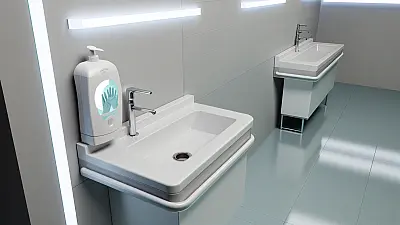WADENA, MN - Multiple residents at Fair Oaks Nursing & Rehab LLC reported waiting up to four hours for basic assistance, including help getting off bedpans, according to a February 2025 state inspection that documented chronic understaffing and delayed response to emergency call lights.

Residents Left Waiting Hours for Basic Care
During a resident council meeting on February 11, four residents voiced serious concerns about staff response times to call lights, reporting waits of at least one and a half hours at minimum. The residents also described a troubling pattern where "staff may come and turn off the call light and say they would return however, do not come back."
One particularly concerning case involved a resident identified as R3, who was cognitively intact but required assistance for all basic activities including toileting, bathing, and dressing due to having an amputated lower extremity. During an interview, R3 described being placed on a bedpan by staff and then waiting four hours before anyone responded to her call light for removal.
Facility records confirmed this account, showing R3's call light remained activated for two hours and forty-seven minutes on February 2. The data revealed a pattern of delayed responses, with R3's room call lights frequently going unanswered for longer than fifteen minutes multiple times.
Chronic Staffing Shortages Documented
The inspection revealed systemic understaffing that directly impacted resident care quality. A licensed practical nurse told inspectors the facility "worked short staffed every weekend and at least twice a week Monday through Friday." The nurse confirmed this staffing pattern was "exhausting to work short staffed and tough on the residents."
Review of five consecutive weeks of staffing schedules revealed concerning patterns: - Memory Care first floor operated below recommended levels 29 out of 35 days - Second floor operated below recommended levels 33 out of 35 days - The facility averaged 61 staff call-ins over the previous 30 days
The facility's scheduler acknowledged using a "floating" system where staff work in different areas than originally assigned due to call-ins or open shifts, resulting in longer completion times for resident care and delayed call light responses.
Call Light Response Times Exceed Safe Standards
Analysis of call light response data from January 28 through February 11 revealed alarming delay patterns that pose significant health and safety risks. The most serious delays included:
- 271 instances where residents waited 15-30 minutes for assistance - 62 instances of 30-40 minute delays - 24 instances of 40-50 minute delays - 11 instances of 50 minutes to one hour delays - 17 instances where residents waited one to one and a half hours - Six instances of waits exceeding 90 minutes, including two calls that went unanswered for over two hours
Medical Implications of Delayed Care Response
Extended wait times for basic care assistance create multiple health risks for nursing home residents. When residents cannot access timely toileting assistance, they face increased risks of urinary tract infections, skin breakdown, and dignity-related psychological distress. For residents with mobility limitations or cognitive impairments, prolonged waits can lead to falls if they attempt self-care beyond their capabilities.
The documented four-hour wait for bedpan removal represents a particularly serious safety concern. Prolonged contact with bodily waste can cause skin irritation, pressure sores, and bacterial infections. For residents with compromised immune systems or diabetes, these complications can escalate rapidly into serious medical emergencies.
Industry standards recommend nursing homes respond to call lights within five minutes for urgent needs and no longer than fifteen minutes for routine assistance. The documented response times at Fair Oaks significantly exceeded these benchmarks, with routine delays of 30-90 minutes becoming commonplace.
Facility Staffing Model Falls Short
The facility operates with a staffing model that provides: - Memory Care first floor: Two nursing assistants and one nurse during day and evening shifts, reduced to one nursing assistant and one nurse at night - Second floor: Three nursing assistants and two nurses during day and evening shifts, reduced to two nursing assistants and one nurse at night
However, schedule reviews showed the facility consistently operated below even these minimal staffing levels. The frequent use of agency staff and floating assignments further disrupted continuity of care and familiarity with individual resident needs.
Additional Issues Identified
The inspection also documented concerns about care planning accuracy and staff training on proper response protocols. The facility's reliance on supplemental agency staff raised questions about consistency in care delivery and familiarity with resident-specific needs and preferences.
Facility management acknowledged the staffing challenges but indicated that the 61 monthly call-ins represented "an average number" for their operations, suggesting acceptance of a staffing pattern that consistently left residents without adequate care coverage.
The inspection findings highlight the critical connection between adequate staffing levels and resident safety, demonstrating how chronic understaffing creates cascading effects that compromise basic care quality and resident dignity.
Full Inspection Report
The details above represent a summary of key findings. View the complete inspection report for Fair Oaks Nursing & Rehab LLC from 2025-02-12 including all violations, facility responses, and corrective action plans.
💬 Join the Discussion
Comments are moderated. Please keep discussions respectful and relevant to nursing home care quality.